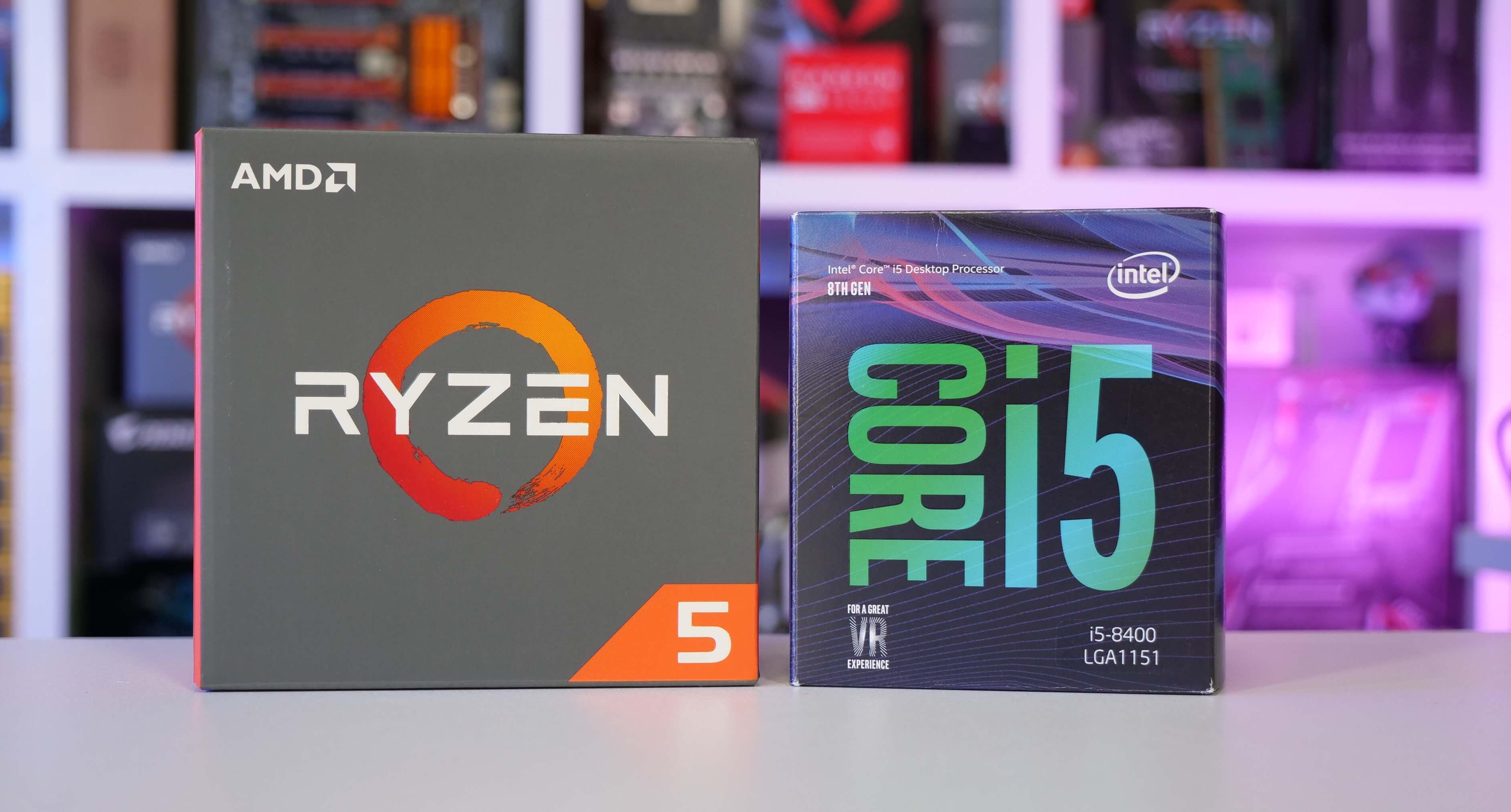Gaming Tests, Let's Wait It Out
As noted earlier this is still one of the few modern titles that does a good job of utilizing the Ryzen CPUs. It's not often you'll see results like these when looking at gaming performance and as AMD's lucky would have it, they just so happen to kick some serious silicon in the one game nobody really plays, hence the name Ashes of the Benchmark.
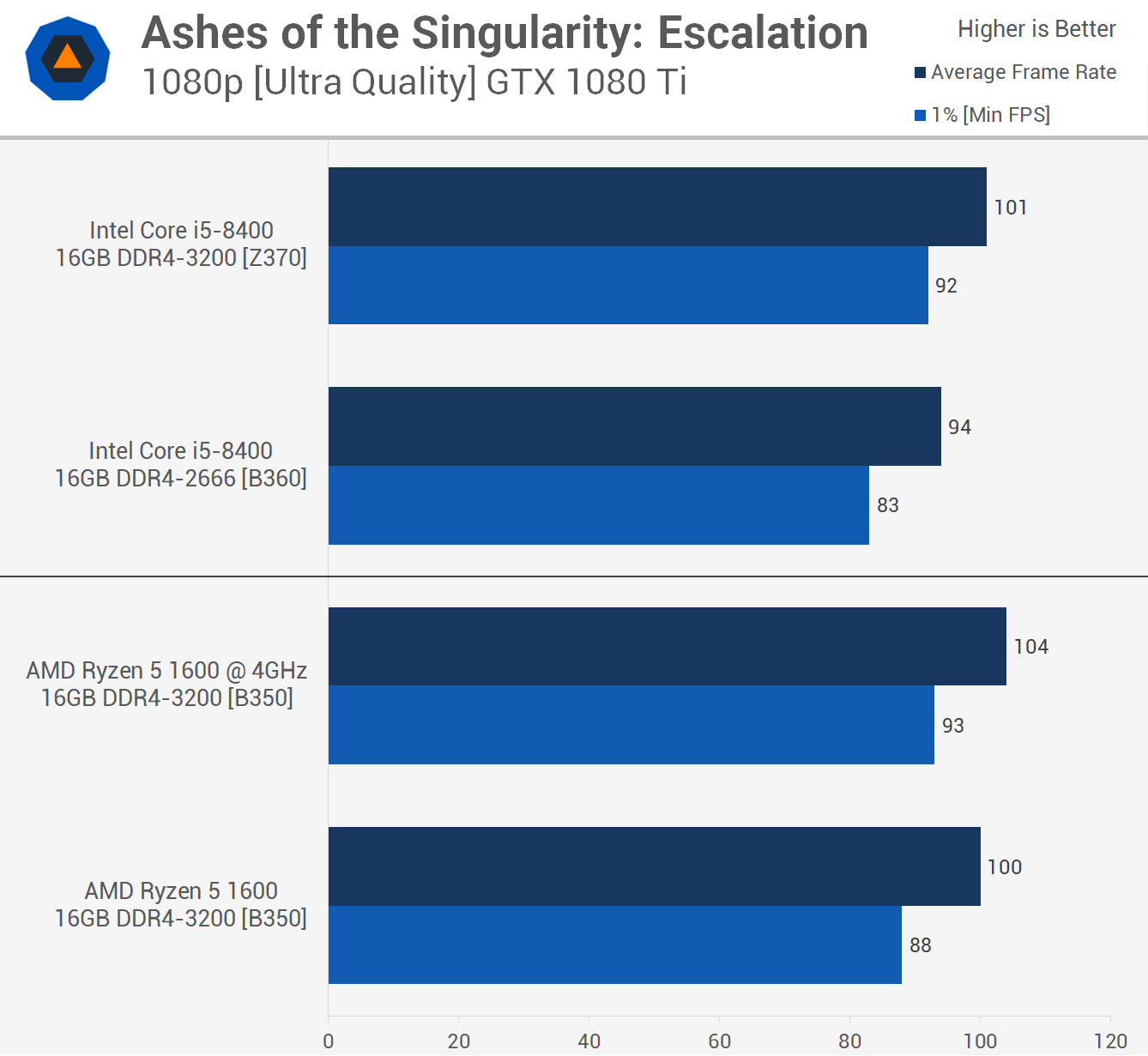
This is a more typical picture when comparing Ryzen and Coffee Lake CPUs in games, it's not a terrible picture but Intel is up to 20% faster with a high-end GPU at 1080p. I'll discuss what this means later in the video. For now let's check out a few more games.

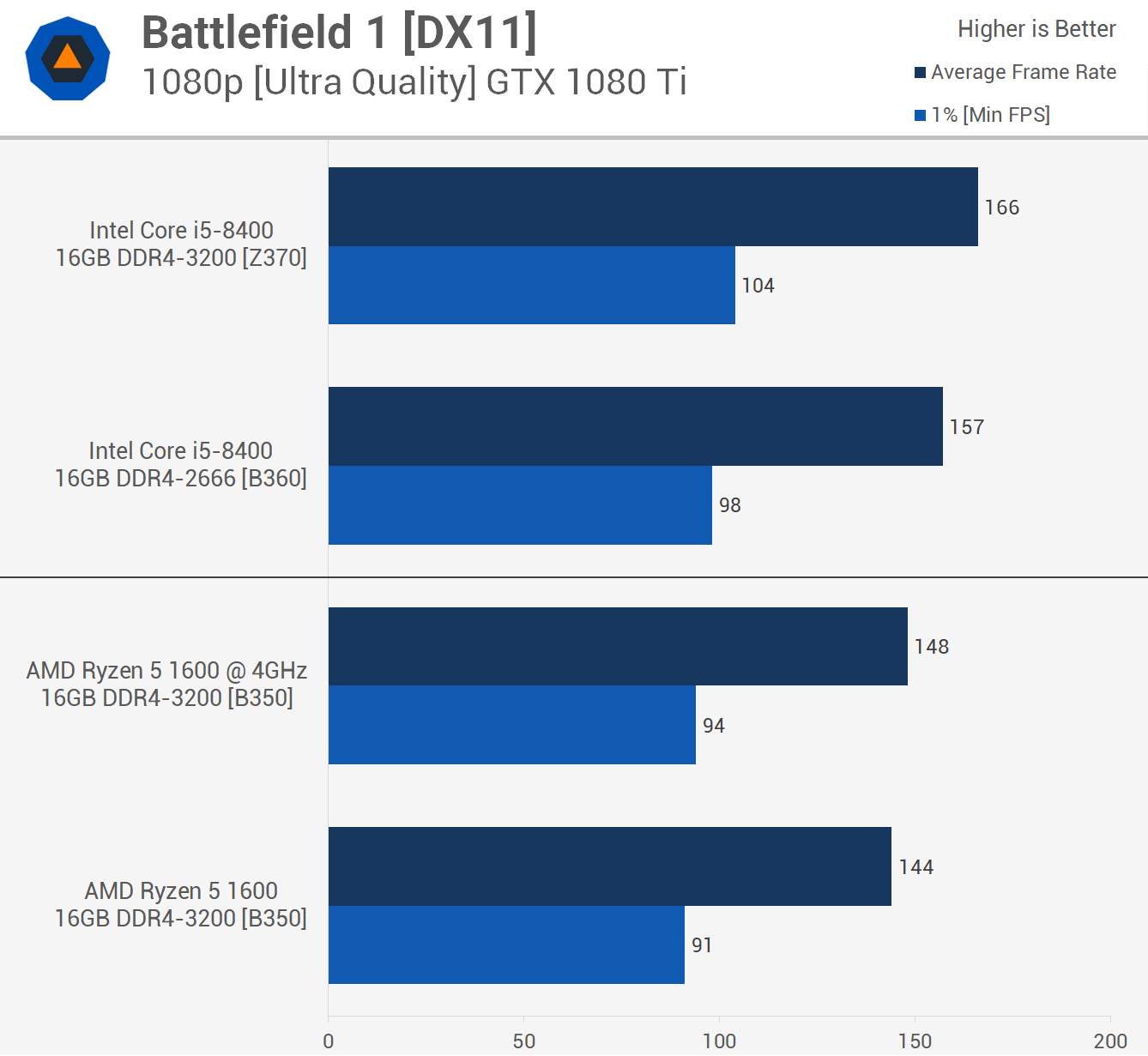
From day one, Battlefield 1 is a game that's played quite well with Ryzen CPUs and we see that's still the case. Although still slower than the Core i5-8400 the margins small enough to deem insignificant, especially when looking at the all important 1% low data.
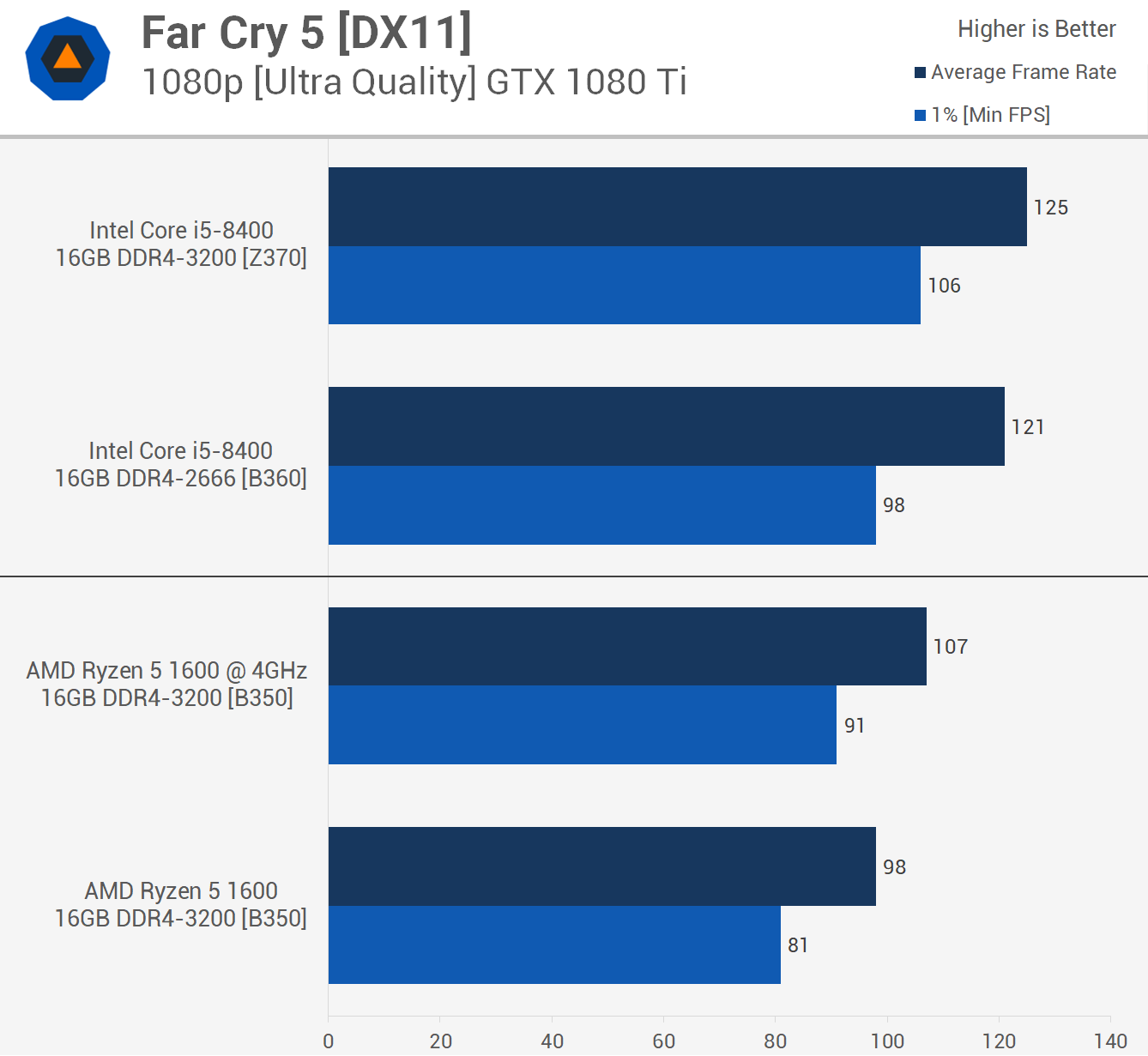
Far Cry 5 is also very playable with the Ryzen 5 1600 despite the Core i5-8400 delivering superior performance. Overclocked the R5 1600 closes the gap but it's still 7% slower than the 8400 on the B360 board for the 1% low result and 12% slower for the average frame rate.
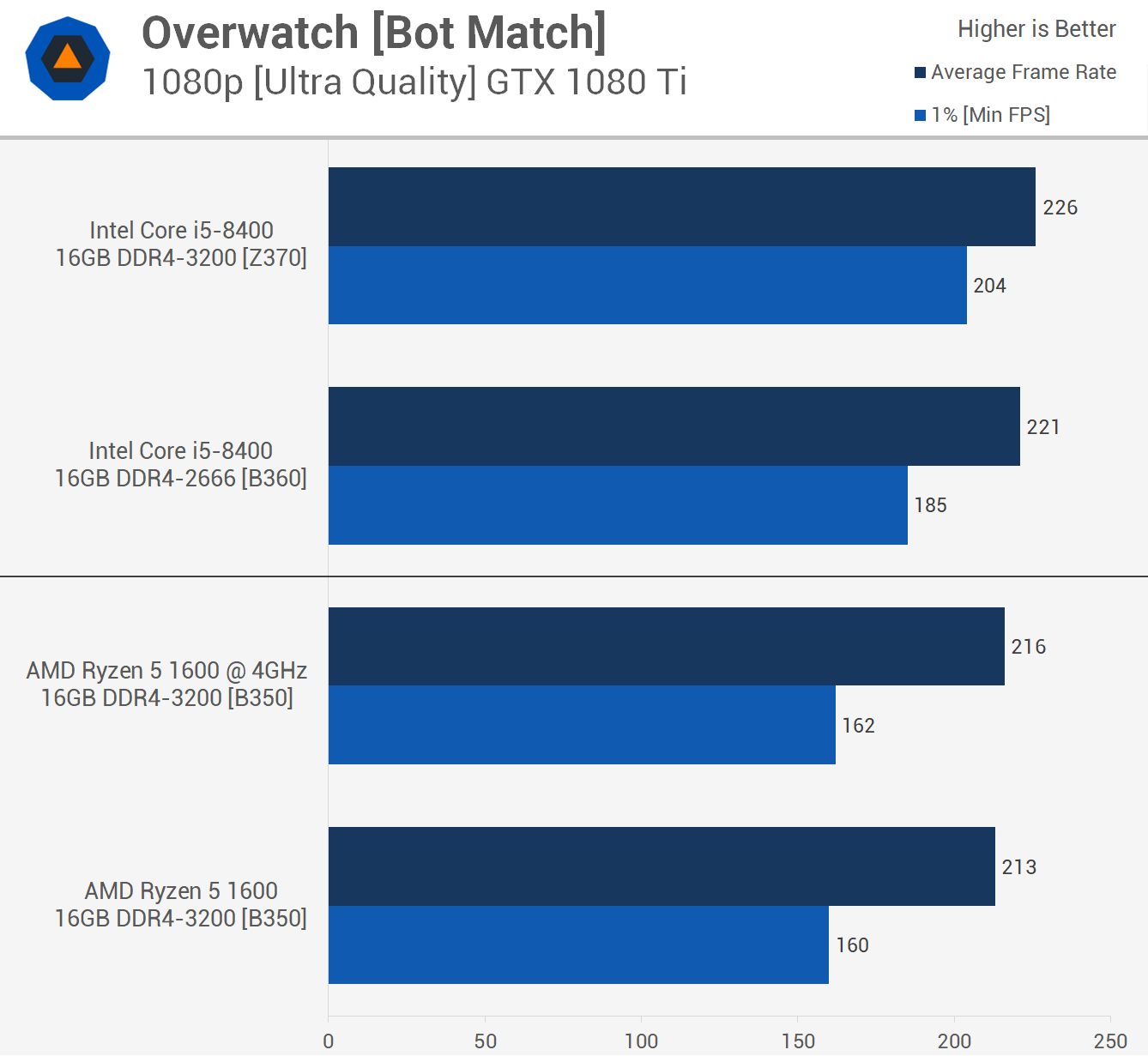
I was expecting the Ryzen 5 1600 to stack up better in Overwatch and while you can't say over 160 fps at all times is bad, I was expecting the Core i5-8400 to pull away for the average frame rate but see a similar 1% low result. In any case both provided extremely smooth performance with the GTX 1080 Ti.
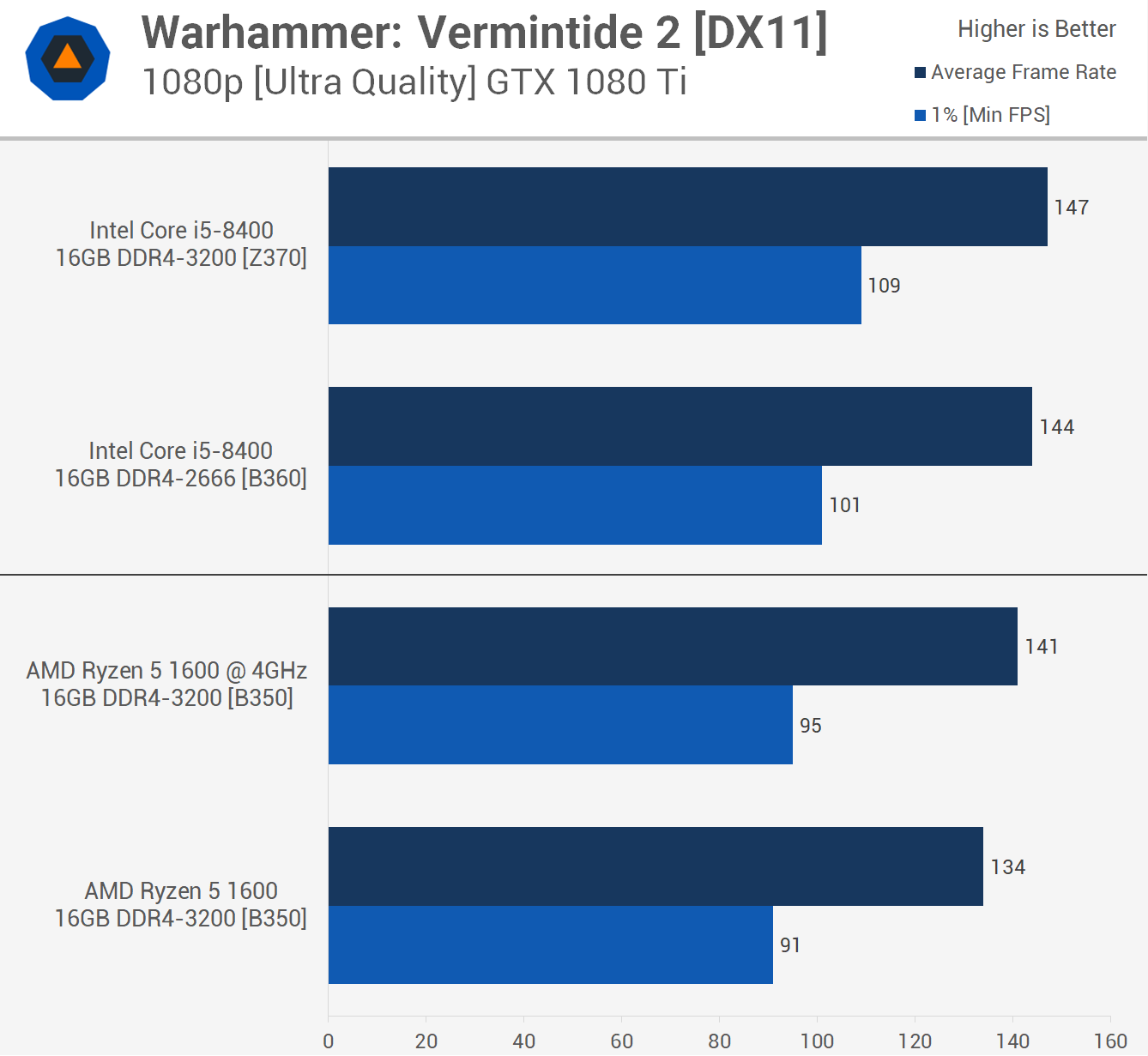
Finally we have Warhammer Vermintide 2 and this recently released title does a good job of utilizing the Ryzen 5 1600. The Ryzen CPU was just 13% slower for the 1% low result and 4% slower for the average frame rate. Again both CPUs provided highly playable performance.
Conclusion
We've have a pretty good look at application and game performance. As expected Intel's faster in games for the most part, while AMD's faster for most of the heavy workloads we tested, that being the situation this is how I look at it. Even with a GTX 1080 Ti at just 1080p there's really no telling which CPU you're using when gaming, both are exceptionally smooth and enable high frame rates, certainly high enough for the average gamer.
When it comes to things like extracting a compressed archive, you're absolutely going to notice a 60% reduction in time. Even Blender where the overclocked Ryzen 5 1600 shaved 20% off the completion time, basically that means for a job that takes the Intel CPU an hour and six minutes, you're looking at 53 minutes with the Ryzen CPU, giving you a 13 minute head start to move onto the next job and over the course of a day that really adds up.
Of course, the time saving could be even larger than that, we saw Ryzen shave 30% off Intel's render time in Corona. Or it could also be less: we saw a 16% reduction with Premiere Pro and then virtually nothing with HandBrake. That break-even situation appeared to be a worst case scenario for AMD. We also saw when overclocked Ryzen only matched the Warp Stabilization performance of the Core i5-8400 in Premiere.
What this shows is that for heavy workloads the Ryzen 5 1600 is king and this is something everyone will benefit from regardless of hardware configuration. Meanwhile to enjoy the Core i5's superior gaming performance you will require an extreme graphics card. With a GTX 1070 or less the difference won't be seen on the frame rate counter. Which CPU will offer the best experience in 2-3 years time is anyone's guess, I wouldn't dare waste your time speculating about such a thing.
What I will do is break down the pricing to work out which platform offers you the most bang for your buck. Start with the memory the price difference between DDR4-2666 and 3200 is negligible, most of the time you're not paying a premium for the higher clocked memory.
Then B360 and B350 motherboards of similar quality cost around the same amount, I'd expect to pay around $80 for a quality board. Then with both CPUs costing around the same amount buyers are looking at spending around $430 for either combo with 16GB's of DDR4 memory. If you want to pair the Core i5-8400 with a Z370 board which honestly I recommend doing, then it's going to cost around $40 more, making Intel's platform 9% more expensive.
The reason I wouldn't bother with B360 or H370 boards is the lack of features and support for overclocking. Although you can't overclock the Core i5-8400 a Z370 board gives you more options in the future, it'll also fetch a better price on the second hand market. In any case as it stands you can secure the 8400 with motherboard and memory for the same price as the Ryzen 5 1600 on a B350 board, so pricing has been somewhat neutralized.
This leaves AMD and Intel in a bit of a stalemate, they both have their strengths and weaknesses but overall are very evenly matched. I can't imagine you'd be anything but impressed with either solution. That said I'd probably purchase the Ryzen 5 1600 for the simple fact that I spend more time working on my PC than I do playing. I also like the idea that AMD's promising future compatibility with new Ryzen CPUs. Intel, on the other hand, will likely ditch their current mainstream platform after the next processor release.
All that said, right now I'd hold off buying either a Ryzen or Coffee Lake CPU until the 2nd-gen Ryzen series arrives later this month. At which point you'll then have access to what will probably be slightly faster 2nd-gen Ryzen CPUs and even cheaper 1st-gen Ryzen CPUs. What today's tests show us is that if AMD can find another 10% performance with 2nd-gen Ryzen then they're going to be in great shape.
Shopping Shortcuts:
